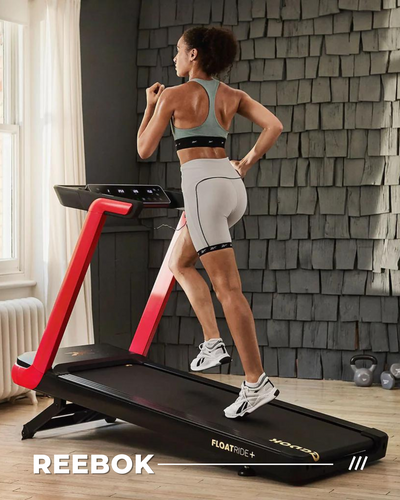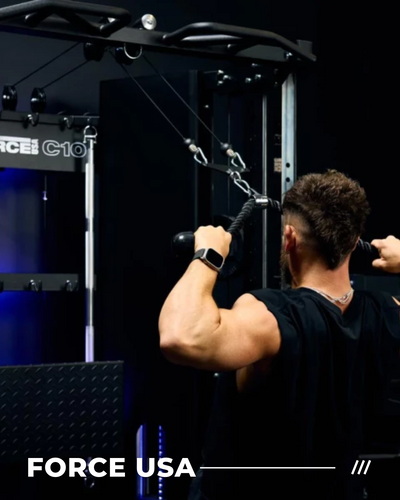BY JAMES WHITE
I was preparing to run my first 5k. Being a competitive person I wouldn't be happy with just finishing the run. I had to do my best. I knew I wasn't going to win, as the winners of these local races had sub 5 minute miles and the most I ever ran was 2 miles at a time of about 16-17 minutes. Even though I was athletic and played lots of sports growing up, I was not in “running shape”. I lifted weights three days per week and did minimal cardio. Did I ease into running? Nope. That would have been the smart way to go about it but hey, I was in my early 20's I felt invincible.
I started running a few days a week on top of my regular lifting sessions. For a few weeks I was adapting and making progress. Then I hit a wall. My lifting suffered. Being naïve and hard-headed I kept pushing harder and harder. I soon realized that my daily naps were getting longer and my workouts were still suffering.
My first 5k was fun and I ran hard. I beat my best training time so I was pleased with that but I knew if I had adjusted my routine I would have done better. That's what this article is about. Adapting your strength and cardio to your goal. There are three distinct goals we will look at in this article. Depending on where you are with your fitness, you will need one but not the other two at the same time. You can always come back in a few months for reference if your goal changes.
GOAL 1 - LOSE BODY FAT & GAIN STRENGTH
Lift three days a week. Walk five days for a half hour. Do this until you adjust to it. This could be two weeks or a month. All depends on your level of fitness. After you adapt to this workload add in one day of high intensity intervals. Start slow and be sure to warm up very well. Go for fifteen minutes.
As you get stronger and improve your fitness, you can add in another day of lifting and another day of conditioning. Not at the same time. Add one new stressor at a time. Push your numbers up on the main lifts. Use a basic-intermediate program. Adapt. Adjust.
GOAL 2 - BUILD MUSCLE & MAINTAIN CONDITIONING
For this goal we keep the main lifts but don't push them to failure. That's what the assistance lifts are for. Use dumbbell work, bodyweight exercises and kettlebells to build some muscle mass. To make sure you maintain good conditioning you can use finishers at the end of sessions or do one day per week of sled dragging. Start with one day per week.
After a few weeks you can add in another session. Eventually you can do 3 finishers a week, on top of 3 days of lifting, OR 3 sled dragging sessions. Hill sprints or stairs are also great options. If you don't have a sled or never used one, you can buy one online or build your own if you are the do-it-yourself type. I've seen sleds built from a big tire, a rope and some rocks for weight. It doesn't matter what kind you have; it just needs to provide some resistance for you to drag while walking forwards or backwards.
GOAL 3 - LOSE BODY FAT & IMPROVE GENERAL FITNESS
Move through your sessions at a brisk pace with minimal rest periods. You're on a mission and it doesn't involve sitting on a machine watching the news or scrolling through Facebook. Your target is less body fat and improved heart-health so we aren't trying to break records on the lifting. Push hard but don't get caught up in the numbers right now.
Every day go for a half-hour walk outside. Go first thing in the morning if you can. There's no science to this, it just feels good to start your day with a walk outside. You take control of your day. Instead of hitting snooze for that half-hour and running late and getting stuck in the drive-thru to get a bagel with extra cream cheese, you decide to make your health a priority.
When your body (and mind) adapts to this (usually a week or two) add in one day of high intensity intervals. Fifteen minutes is all you need. After another week or two you can add in some finishers. 5-10 minutes at the end of your regular training sessions. Finishers can be anything from a circuit of bodyweight exercises done with limited to no rest, or a combination of dumbbells, kettlebells, sleds, row machines, Airdyne bikes etc... you are only limited by your own imagination. The purpose of a finisher is to exhaust the reserves in your body to the point where you have nothing left physically and mentally. They are a great challenge that you can mix in occasionally. There's no need to do them daily as you will risk burn-out if you push to the brink of exhaustion every session.
BUILD UP FROM WHERE YOU ARE
At one point in my training career I was doing no cardio. Zero. Not even walking. I started with a 20-minute walk on lunch. It took some effort to get going. Walking was boring and I didn't feel like it. But I knew I needed it. Then I added in some stairs a few times a week. Soon I was dragging my sled on lunch. The key is to do just enough to elicit a response. Not going crazy and trying to do everything at once.
Pick a goal and stick to it for longer than a week. Prioritize. Too many goals will get you little results. Your program will never be perfectly balanced. But if you have one area that is lagging behind, spend some time hammering away at that weakness and make it a strength.







